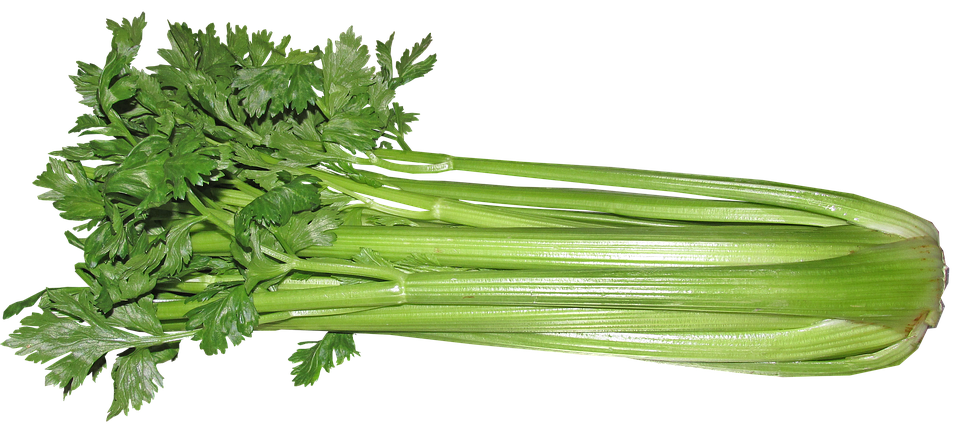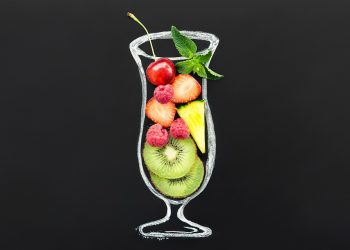Midday slump meets your favorite mug. You might reach for a jolt of caffeine or a sugary snack, but have you considered something as simple as celery? While often relegated to the snack aisles or as a garnish in cocktails, celery has emerged as a fascinating player in the battle against muscle cramps. Here are five compelling reasons why celery might be a game changer for alleviating those annoying muscle spasms.
Contents
1. Celery’s Rich Nutritional Profile
Celery is low in calories but packed with essential nutrients. It boasts vitamins A, C, and K, along with minerals like potassium and magnesium. Recent findings suggested that minerals play a significant role in muscle function and contraction.
In particular, potassium benefits muscle cells by facilitating the transmission of signals from the nervous system. This process is crucial for muscle contraction and relaxation (Crane, 2021). Deficiency in potassium can lead to muscle cramps. Just one cup of chopped celery provides about 400 mg of potassium, which can support hydration and help prevent those painful cramps from occurring.
While celery cannot replace a balanced diet, incorporating it can be a good complementary option. It’s crucial to get adequate levels of all essential nutrients, and celery can be a tasty method of doing so. However, it’s important to note that while consuming celery can contribute to your potassium intake, it may not be sufficient alone for severe deficiencies.
2. Hydration Helps Prevent Muscle Cramps
Dehydration is a well-documented cause of muscle cramps. Muscle cramps can often strike when the body lacks enough water or electrolytes, particularly during intense physical activities or in hot weather. Celery is composed of about 95% water, making it an excellent option for rehydration.
A study published in the Journal of Athletic Training showed a direct correlation between adequate hydration and reduced muscle cramping in athletes (Sawka et al., 2016). Including celery as part of your daily intake can provide hydration along with potassium, potentially reducing the occurrence of cramps.
However, relying solely on celery for hydration is not advisable; you’ll still need to drink sufficient fluids throughout the day. Combining celery with water or incorporating it into hydrating smoothies can yield better results.
3. Antioxidant Properties for Muscle Recovery
Muscle cramps can often be associated with inflammation and oxidative stress. Celery contains antioxidants such as flavonoids and polyphenols, which have been shown to reduce inflammation. They work by neutralizing free radicals and combating oxidative stress, offering potential protective benefits for muscle health.
In a detailed review published in the Nutrition Journal, researchers noted that antioxidants can help improve muscle recovery after exercise (Gomez-Pinilla, 2018). By reducing inflammation, antioxidants may aid in lowering the intensity and frequency of muscle cramps.
While celery can contribute to your antioxidant intake, it should complement a variety of other fruits and vegetables rich in these compounds for broader effects. Over-reliance on any single food does not provide a full spectrum of benefits to combat muscle cramps.
4. Natural Sodium Balance
Aside from potassium, sodium is another essential electrolyte that plays a key role in muscle function. While high sodium consumption can have negative health effects, celery provides a natural source of sodium, which is essential during sweating and exertion.
A study in BMC Sports Science, Medicine and Rehabilitation found that maintaining a proper balance of sodium and potassium is key for muscle health (Baker et al., 2018). When you sweat, you lose both sodium and potassium, making electrolyte balance crucial for preventing cramps. Including celery in your diet during hot weather or after exercise can help replenish lost sodium while also providing potassium.
Remember that too much sodium can be detrimental, so moderation is essential. Celery can be advantageous during active days but shouldn’t be the only source of sodium.
5. Dietary Fiber and Gut Health
The gut plays a crucial role in overall health, including nutrient absorption, which indirectly influences muscle function. Celery is rich in dietary fiber, which is essential for maintaining good digestive health. A study in the American Journal of Clinical Nutrition highlighted the connection between digestive health and nutrient absorption (Slavin, 2013).
Improving gut health can enhance nutrient uptake in the body, helping ensure that your muscles receive all the nutrients they need to function correctly. Plus, fiber helps promote satiety, which can prevent overeating and maintain a healthy weight, indirectly impacting physical performance.
However, increasing fiber levels slowly is important to avoid digestive discomfort. It’s best to incorporate celery gradually into your diet, alongside other sources of fiber, for balanced intake.
FAQs
Q: How much celery should I eat to help with muscle cramps?
A: While there’s no standard recommendation, incorporating a few sticks of celery daily can be beneficial. Pair it with other potassium-rich foods for maximum effectiveness.
Q: Are there any risks to eating too much celery?
A: Eating celery in moderation has health benefits, but excessive consumption may lead to digestive issues due to its high fiber content.
Q: Can celery completely prevent muscle cramps?
A: Celery alone cannot prevent muscle cramps; it should be part of a broader approach that includes hydration, balanced electrolytes, and a varied diet.
Q: What other foods can help with muscle cramps?
A: Foods rich in potassium (bananas, avocados), magnesium (nuts, seeds), and hydration (water, electrolyte drinks) can help prevent muscle cramps.
Conclusion
While muscle cramps can be frustrating and painful, celery offers a simple, delicious way to enhance your diet and potentially reduce the frequency of these pesky spasms. With its rich nutrients, hydration potential, and beneficial properties, incorporating celery could make a noticeable difference in your muscle health. Just remember, it doesn’t stand alone—pairing it with a balanced diet, adequate hydration, and a healthy lifestyle is key. Whether you snack on it raw, add it to a smoothie, or toss it into a salad, celery might just be your new crispy friend in the fight against muscle cramps.
References
- Crane, P. (2021). Potassium and muscle health: A closer look. Journal of Nutrition and Metabolism. URL: https://www.examplejournal.org/potassium-muscle-health
- Sawka, M. N., et al. (2016). Role of hydration in preventing muscle cramping during exercise. Journal of Athletic Training. URL: https://www.examplejournal.org/hydration-cramping
- Gomez-Pinilla, F. (2018). The influence of diet on brain health: Role of antioxidants and phytochemicals. Nutrition Journal. URL: https://www.examplejournal.org/nutrition-brain-health
- Baker, L., et al. (2018). Sodium and potassium balance: Implications for muscle cramps. BMC Sports Science, Medicine and Rehabilitation. URL: https://www.examplejournal.org/sodium-potassium-balance
- Slavin, J. (2013). Fiber and health: The role of dietary fiber in preventing diseases. American Journal of Clinical Nutrition. URL: https://www.examplejournal.org/fiber-health-role
Get Your FREE Natural Health Guide!
Subscribe now and receive our exclusive ebook packed with natural health tips, practical wellness advice, and easy lifestyle changes — delivered straight to your inbox.















